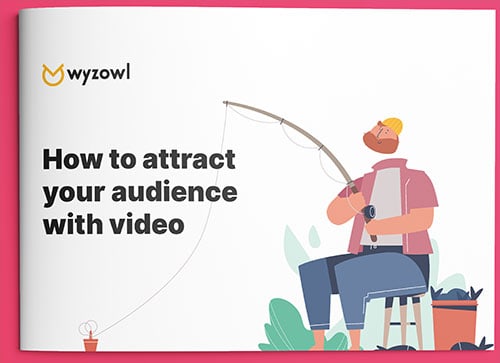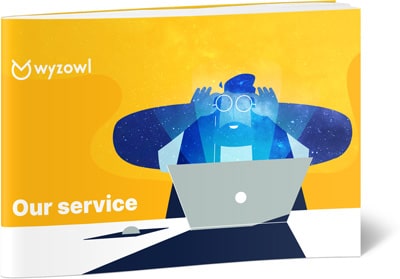Last updated 26th July 2024
Did you know…
In most cases, content produced by the marketing team can, and should, be used by the sales team as a way to educate and delight customers.
But in order for that to work, your sales and marketing teams need to be better aligned. When this happens, your marketing team can create content that really enables the sales team to do their job, and keep the money rolling in!
In this article, we’re going to take a look at 8 must-have types of marketing content for sales enablement.
What is sales enablement?
Sales enablement is exactly what it sounds like – it’s enabling your sales team to be the best they can be!
This is done by equipping them with tools and content that can help them to sell better, sell faster, and sell more.
After all, without sales there are no customers, and without customers there’s no business!
Sales enablement helps your sales team to ensure more leads convert so that everyone can hit their targets consistently. This allows you to scale your success as, by equipping everyone with the same great tools, you’re no longer relying on top performers to carry the load.
This isn’t just important for profitability, it’s also important for morale on your team. When people feel like they have the tools they need to do a great job, they can get on with their work in a happier and more productive way.
1. Case studies
That’s not great news for sales teams.
It’s their job to sing the praises of the business and try to persuade leads to convert.
Case studies can really help with this as they give your sales reps another voice to work with. It’s the classic: “Don’t just take my word for it!”
And, the truth is, customers never really ‘take your word for it’ anyway.
Case studies are like in-depth reviews that show your leads just how much your existing customers trust and value your service. They also present data that proves your product or service works.
Here’s an example from Kettlebell Kings and Hubspot:
This short video highlights some doubts that Kettlebell Kings had about using Hubspot, which could really speak to potential customers in the same position. And it also crushes those doubts by talking about the successes that the business has enjoyed through their partnership with Hubspot.
Case studies can also be presented in text format, like this one from Infobip:
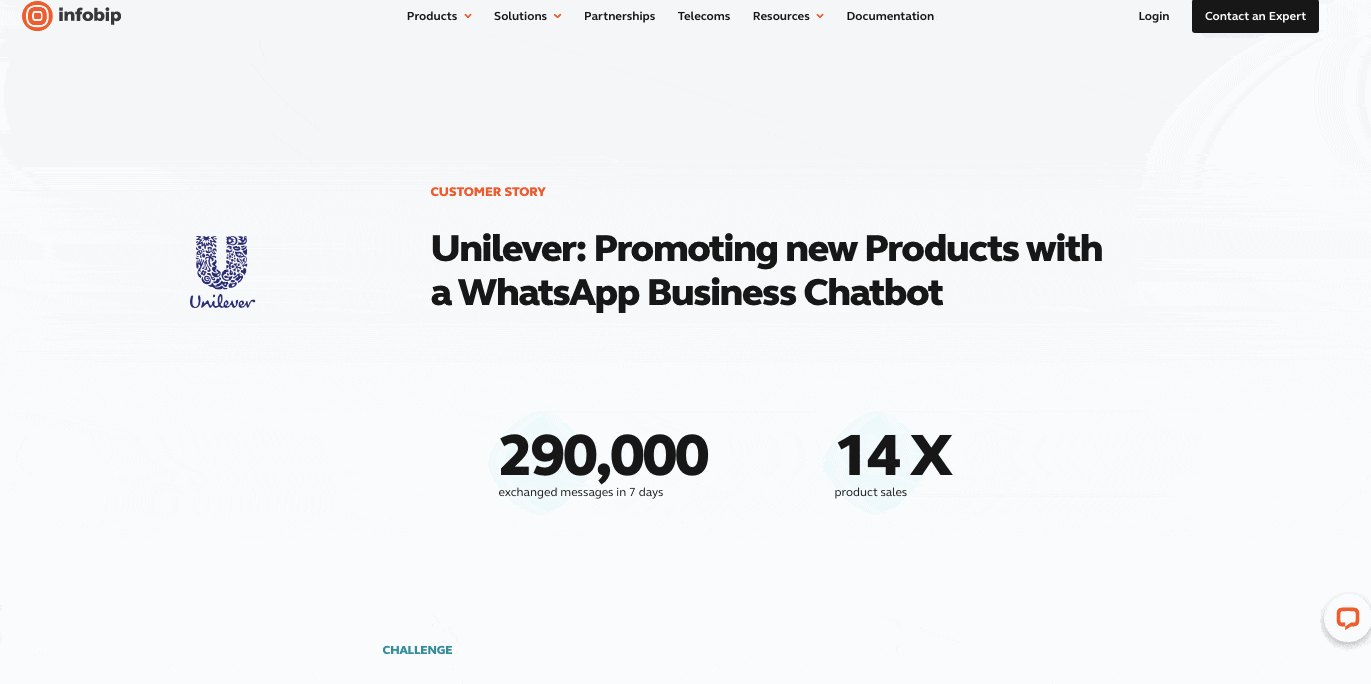
This case study creates a story that could interest potential customers and splits it into 3 sections: the challenge, the solution, and the results.
This page also ensures that the data is nice and big, above the fold, so that it immediately captures the eye of the reader.
Case studies like these allow your sales team to back up what they’re saying in their pitch and this can be very beneficial when it comes to converting leads.
2. Communication guidelines
While not a type of marketing content that your sales team can share with potential customers, communication guidelines are a valuable tool for creating a consistent experience.
Customers like to do businesses with companies that they identify with. So your sales team needs to reflect your brand and its values in all of their communications.
For example, if you’re a corporate B2B brand then you won’t want a sales rep that’s cracking jokes on every call. Similarly, if your brand is fun and playful then a stiff sales person is going to do nothing for your conversion rate.
Communication guidelines can help your sales team understand how they should best communicate with your customers in order to create a consistent, authentic experience.
Here’s an example from our Wyzowl Communication Guidelines document:
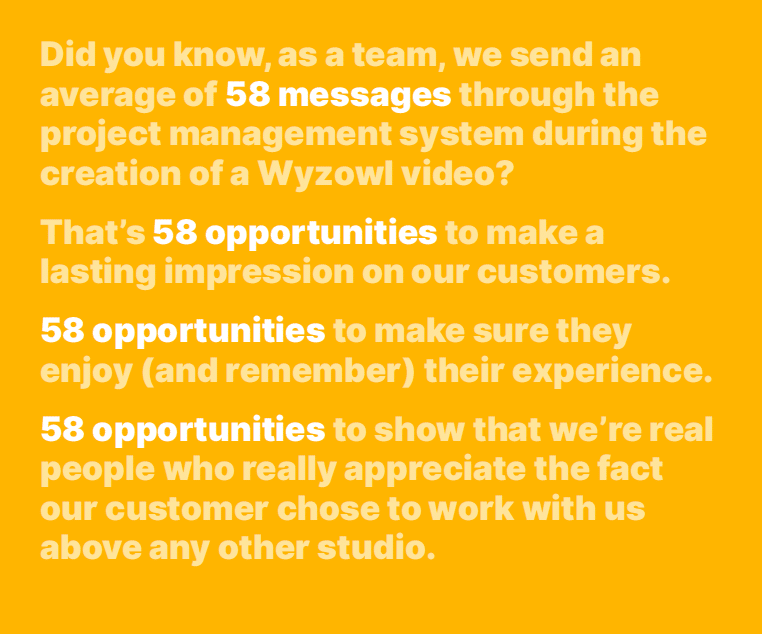
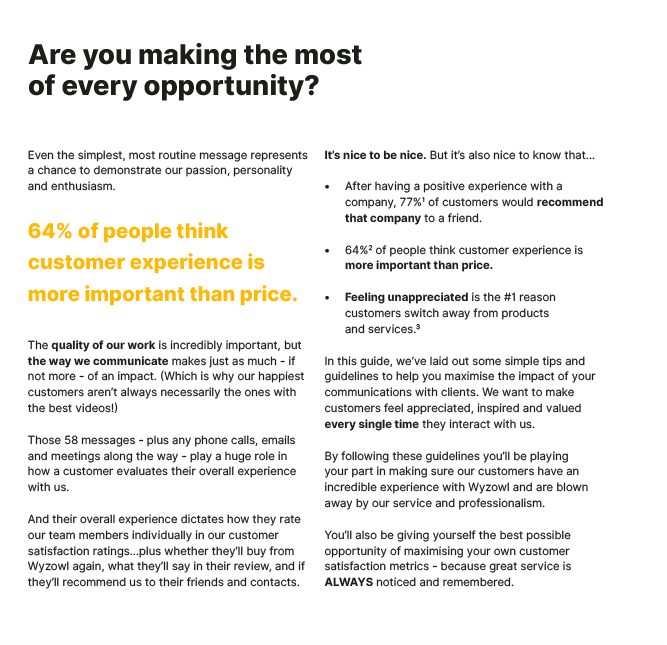
While we won’t go into every single page of the document here, we can give you a quick rundown of what it includes so that you can replicate this in your business – if you choose to do so!
Our communication guidelines document covers:
– Instructions for how we communicate with customers across all platforms
– Tips and best practices
– A list of preferred communication tools, and how to use them
– And a couple of golden rules!
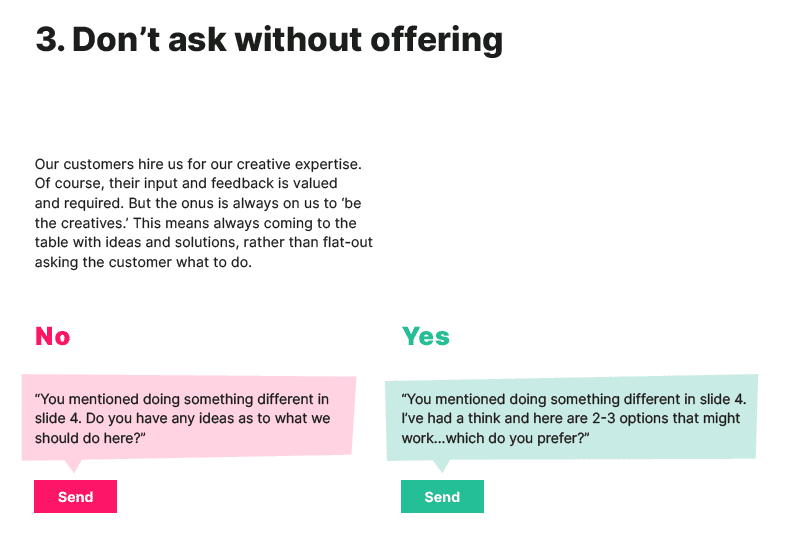
A document like this can really enable your sales team to communicate confidently with customers in your brand voice.
3. Videos
Picture this:
You pick up the phone to call a lead and you get their answering machine. It’s the third time you’ve missed them this week. So you send an email, and that email sits in their inbox along with hundreds of others.
How many times have your sales reps done that?
And you know what they say about doing the same thing over and over again and expecting different results (it’s the definition of insanity, according to Albert Einstein!)
It’s time to shake things up…with video.
Whether your business is B2B or B2C, your leads are probably busy people. Everyone’s busy!
Sometimes that means they’re too busy to pick up the phone or reply to your email. BUT, videos make digesting information quick, easy, and fun.
Sending your leads a short video that educates them on your product or service, could help to increase your conversion rate. After all, 94% of people feel video is a good way to build confidence during the sales process.
Here’s an example:
This video explains the research behind the product and exactly how it works in just 75 seconds, while using engaging animation to keep the viewer entertained.
In addition to converting more leads, videos can also help your sales team to answer frequently asked questions at scale.
We all have those questions that customers ask again and again, and answering them takes valuable time away from your sales team.
A quick video that answers the question in detail, like this one that we made for Service Credit Union, will help to save your team time, so they can focus more on getting more customers!
4. Scripts
In addition to communication guidelines, scripts will also help your sales team to keep communications consistent and effective.
A sales script is a document that sales reps can use as a point of reference while talking to potential customers.
A sales script shouldn’t be written out word for word, as this will most likely come off as wooden and insincere over the phone. Instead, your sales scripts should include a bullet-pointed list of talking points and questions that will help guide the customer interaction towards a purchase.
Scripts are a particularly useful type of sales enablement content for new team members as it gives them something to refer to if they get stuck.
The creation of sales scripts is a great way to get your marketing and sales teams to work together. Your sales team can bring their expertise from the millions of calls they’ve made over the years, and your marketing team can bring their copywriter flair from all of that content they create.
Together, your teams will be able to create effective and persuasive scripts that reflect your brand voice and speak directly to your ideal customers.
5. Independent research
Just like case studies can give you social proof, independent research can give you concrete proof through facts, figures, and stats.
People are drawn to statistics because they’re easy to remember, and they add another level of credibility to your sales pitch.
If your leads are talking to several different companies at once – for example, you and a couple of competitors – (and they probably are!) then a statistic can really help you to stick out in their mind as a company that knows what they’re talking about.
Speaking of competitors, competitor research is one of the ways you can use statistics to enable your sales team. By conducting research on your competitors, you can give potential customers reasons why your company is better – and present them with the figures to back it up!
Another type of research that can help sales teams is a study of your past customers. You could use a free tool like SurveyMonkey to conduct a survey of your past customers, asking questions like:
– How satisfied were you with your product?
– Did our service help contribute to your success?
From there, you can add up the responses to create some stats that will really bowl over your prospects. Simple, yet super effective!
6. eBooks
Yes, eBooks.
We can guess what you’re thinking: ‘eBooks are for attracting people and getting leads NOT for closing deals.’
Well, actually, they’re pretty good at doing both.
While attracting new customers may be the role of the marketing team, it’s the sales team that needs to handle those leads and nurture them until they convert.
So having the sales team’s input on lead generation content, like eBooks, can be really beneficial for helping to attract the right kind of leads.
Further down the line, sales teams could also use eBooks to try and close deals. For example, if a lead is sitting on the fence because they aren’t sure what the benefits of your product are or how they would use it, the sales rep could send them an eBook that could help to educate them and encourage them to come to a decision.
There’s also some psychology behind giving something away for free. If your sales team is trying to close a deal with a lead and, in the process, they give that lead a free eBook, then there is a principle of reciprocity there.
In psychology, the principle of reciprocity is where one party feels obliged to return the favour bestowed upon them by complying with the person who gave it to them.
In other words, if you give leads free stuff, they’ll be a little bit more likely to convert.
7. One-pagers
A one-pager is a simple one page document that presents the ‘need-to-know’ facts about a product, brand, or service. Think of it as a high-level overview or an ‘elevator pitch’.
One-pagers can be extremely helpful resources for your sales team, particularly if you sell a lot of products.
Rather than relying on their memory to explain the USPs and benefits of a certain product, they can quickly glance at their one-pager and find all of the information there.
A great one-pager should include:
– What it does
– How it helps them
– USPs and benefits
– How much it costs
8. Buyer personas
Buyer personas are an amazing way for your sales team to visualise and understand exactly who it is they are talking to all day!
A buyer persona is a semi-fictional representation of your ideal customer(s). By conducting market research, you can find out all you need to know about your ideal customers – from basic demographic information, like their age, all the way to their goals and aspirations in life.
Of course, it’s difficult to find out what your customers’ goals and aspirations are through market research – and that’s why buyer personas are semi-fictional. You fill in the gaps yourself to make your buyer personas as detailed as possible.
Here’s a simple example:

You can make your buyer personas as detailed as you want. For example, adding information like the customer’s income, educational background, any challenges that they face, and how your business can help them.
The list is practically endless!
But the end result is always the same:
Giving your sales team a clear person to think of when they’re prospecting for, and communicating with, leads.
This will really enable them to find the right people and ask the right questions in order to make more leads convert into customers.
Final thoughts
Forget about waiting for the stars to align, when your sales and marketing team align incredible things can happen!
By utilising your marketing content for sales enablement you can inform, inspire, and persuade your leads to convert into customers.
To find out more, or to get started on your own awesome sales enablement content, click here to visit our Sales Video page.






